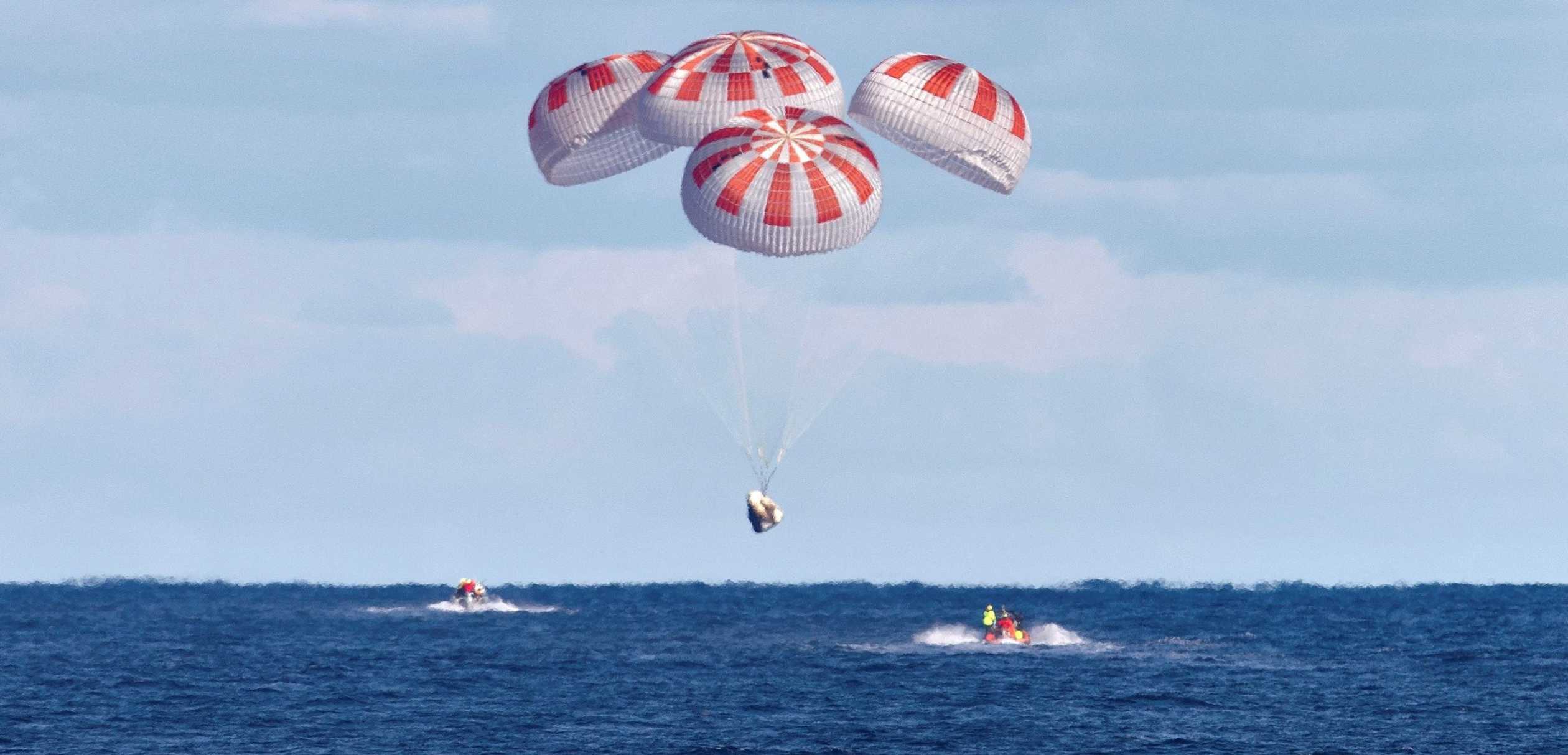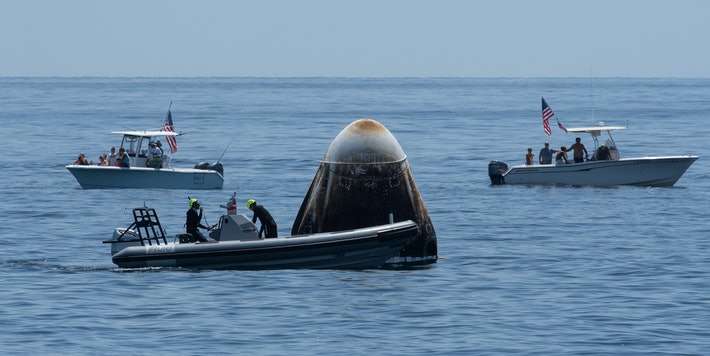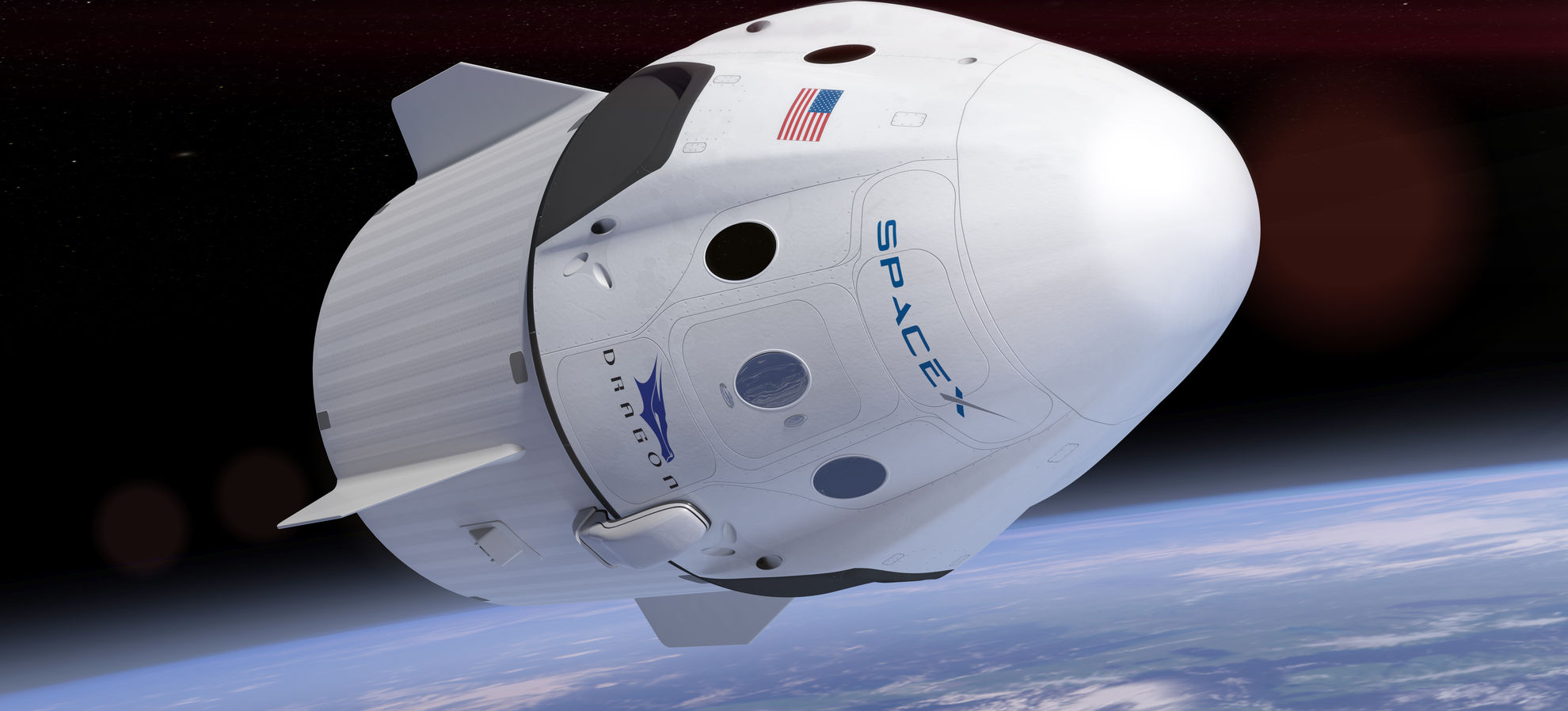SpaceX’s ‘Crew Dragon’ spacecraft carrying NASA astronauts Douglas Hurley and Robert Behnken onboard, successfully landed by splashing in the Gulf of Mexico off Pensacola coast, Florida on August 2, 2020. With this, the SpaceX spacecraft ‘Crew Dragon C206 Endeavor’ successfully completed its mission ‘Demo 2’ on Sunday. Both the astronauts are veterans of the Space Shuttle program and ‘Demo 2’ was their third trip to space.
Today, history was made.@AstroBehnken & @Astro_Doug returned to Earth aboard @SpaceX's Crew Dragon Endeavour, completing their #LaunchAmerica @Commercial_Crew mission and ushering in a new era of human spaceflight: https://t.co/uPa3srrXp4 pic.twitter.com/sP7sxPQXbf
— NASA (@NASA) August 3, 2020
At 1:59pm ET, the @SpaceX Dragon Endeavour hatch opened. @AstroBehnken and @Astro_Doug are minutes away from exiting the vehicle. #LaunchAmerica pic.twitter.com/qEBqvMEYqV
— NASA (@NASA) August 2, 2020
- The Crew dragon endeavour spacecraft launched at 3:22 pm EDT on May 30, 2020 from NASA’s Kennedy space centre, Florida.
- The SpaceX spacecraft reached Earth’s orbit around 12 minutes after the launch and got separated from the Falcon 9 rocket’s second stage.
- The astronauts orbited Earth for 19 hours and occasionally flew the spacecraft manually. The spacecraft is designed to fly automatically.
- After that, the spacecraft automatically docked on to the ISS and the Astronauts were welcomed aboard.
- The astronauts conduced research performed tests on the Crew Dragon spacecraft for 2 months.
- After spending 63 days, the Crew Dragon Endeavour undocked from ISS right on time at 7:34 pm EDT on 1 August.
- The spacecraft landed safely in the ‘Gulf of Mexico’ on August 2, 2020, at 2:48 p.m. EDT.
- The last stage was the recovery of Behnken and Hurley at sea in the Gulf of Mexico using SpaceX’s GO Navigator recovery vessel.
- There were a few private boats around the area, which violated security conditions, but SpaceX established a perimeter and continued, which is necessarily the best they could do under these conditions.
- The capsule loaded onto the recovery navigator at 3:18 PM EDT, and the crew started exiting at 4:6 PM.


"We're both super, super proud having been just a small part of the team that accomplished bringing those spaceflights back to the Florida coast and bringing that capability back to America." @AstroBehnken reflects on his experience with #LaunchAmerica: pic.twitter.com/krxY2iWqE8
— NASA (@NASA) August 2, 2020
SpaceX ‘Demo 2’ mission
The Crew Dragon ‘Demo 2’ was a demonstration mission intended to complete the NASA validation of crewed spaceflight operations using SpaceX hardware.
The mission started with the first flight of Dragon spacecraft, launching the two astronauts to the International Space Centre on 31st May 2020, from NASA’s ‘Kennedy Space centre launch complex 39A’, Florida on Saturday.
The Spacecraft was launched atop a ‘Falcon 9 block 5’ rocket. The SpaceX rocket displays the ‘worm logo’ of NASA. This is the first time this logo is officially being used after it was retired in 1992. ‘Falcon 9 block 5’ rocket is a two-stage-to-orbit medium lift launch vehicle which is reusable.
- Demo-2 is the first crewed orbital spaceflight launched from the United States since NASA’s last Space Shuttle mission, STS-135, by ASTP Apollo in 2011.
- It is the first two-person orbital spaceflight launched from the United States since STS-4 in 1982.
- Elon Musk’s SpaceX becomes the first private company to launch human beings into orbit.
The second flight of the SpaceX Spacecraft returning the astronauts back to Earth marked the end of the ‘Demo 2’ mission this Sunday.
- The success of this mission makes history, as this is the first time a private company delivered and returned astronauts to and from International Space Station, located in low Earth orbit. ‘Demo 1’ mission flights were uncrewed flights.

NASA’s ‘Commercial Crew Program’
These demonstration missions are a part of the ‘Commercial crew program’ of NASA. The Commercial Crew Program is a human spaceflight program operated by NASA, in association with American aerospace manufacturers Boeing and SpaceX. The program succeeds NASA’s involvement in Roscosmos’s Soyuz program, through which it depended on the transport of its astronauts to the ISS after the retirement of the Space Shuttle program in 2011.
After STS-135, the last mission of the Space Shuttle program in 2011, NASA no longer had any spacecraft system capable of sending humans to space. Subsequently, it used Russian facilities to send its astronauts into the International Space Station (ISS), costing up to US$80 million per astronaut. In 2010, NASA started inviting private companies and the space agency began funding the development of a variety of homegrown commercial spacecraft. The initiative is popularised as ‘Launch America’ campaign. Launch America is a public–private partnership between United States and multiple space companies, closely related to the Commercial Crew Development program. ‘Demo 2’ is the first launch under the ‘launch America’ banner.
SpaceX and Boeing emerged as the winners of this competition in 2014 for the building and launching of spacecrafts to transport Astronauts. NASA administrator Jim Bridenstine says that a government monopoly in space exploration is not sustainable. Inviting private players is will bring down the cost of space travel.
- SpaceX is now the first private company to complete the testing and development program, and Boeing is in process of becoming a second commercial transporter for NASA.
Next SpaceX mission for NASA
The first operational mission, named Crew-1, is currently set to take place in September, and will transport three NASA astronauts and one JAXA astronaut to ISS for a regular tour as crew members of the orbital science platform.